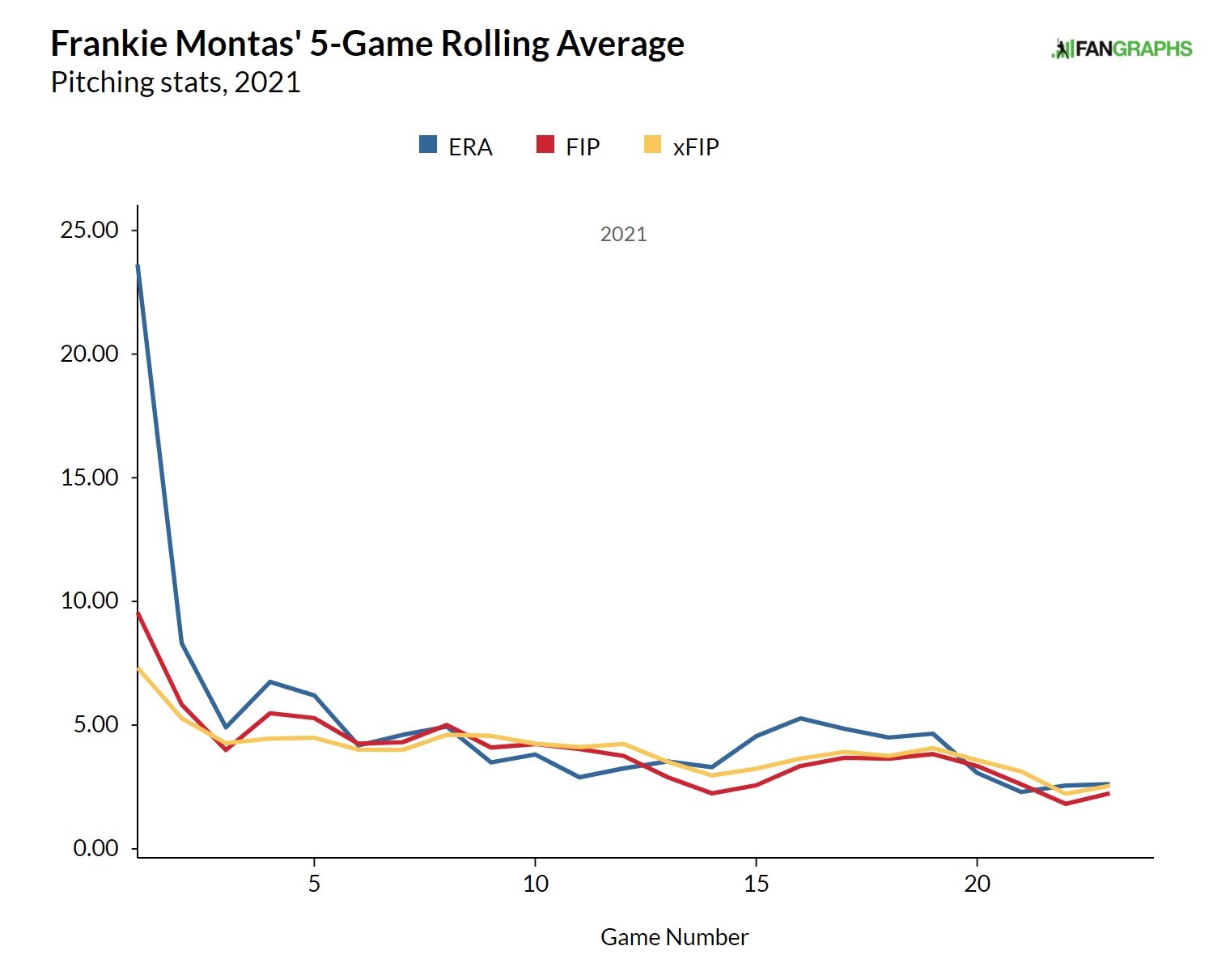The Padres Descend Into Danger
A month ago, things were fine. After the games of July 17, the Padres were 55-40, hanging on to the periphery of the NL West chase. Five games back of the Giants, they didn’t have a ton of hope — our odds gave them a 10.4% chance of winning the division — but they were close enough to dream, and a 5.5-game edge in the Wild Card race meant they had a 92.3% overall chance of reaching the playoffs. Today, that number is down to 46.3%. Yikes!
It didn’t happen overnight. By looking at the slow decline of their chances, I think we might learn a thing or two about what went wrong, and maybe get a sense of what they’ll need to do the rest of the year to avoid plummeting all the way out of the postseason, an outcome that felt downright inconceivable before their recent swoon.
July 24
Record since July 17: 3-3
FG Playoff Odds: 92.3%
Wild Card Lead: 5.5 games
Things were looking up! A huge group of reinforcements had just come off the injured list, as Drew Pomeranz, Blake Snell, Yu Darvish, Ryan Weathers, and Austin Nola all returned to action. On the field, the team fended off some NL East opposition — Nationals, Braves, and Marlins — and kept pace in the standings. Even better news: the trade deadline was approaching fast, and there’s no one better to add to a team than AJ Preller. The Padres were linked to everyone, and after their offseason frenzy, every rumor seemed credible. The playoffs seemed all but a certainty; the real question was whether they could catch the teams ahead of them in the West. Read the rest of this entry »

